How to Care for Cast Iron Cookware
-
Categories :
Dining Room


Discover all the ins and outs of looking after your most valuable cookware with this complete guide to caring for both traditional and enamelled cast iron.
If there’s any piece of kitchenware that’s known for longevity, it’s cast iron cookware.
Not only does the invention itself date back to ancient 220AD China—some of us literally have cast iron items in our homes that have been around for centuries, handed down over generations.
Other kinds of cookware simply can’t compete with the hardcore durability of cast iron.
And that’s just one of the many benefits of enamel cast iron cookware. As a safer and more versatile alternative to non-stick cooking, cast iron cookware offers an easier, healthier, and more cost-effective way to cook delicious and creative meals.
All we need to do to reap these wholesome rewards is to keep up our end of the bargain, treating our cast iron cookware with the care it deserves. While there tends to be a perception that cast iron is high maintenance, the truth is that it’s very easy to care for—all it takes is the right know-how.
So put all your concerns on the backburner. After reading this straightforward guide to caring for cast iron, you’ll know exactly what to do (and what not to do) to keep your most valuable kitchen occupants performing at their best for decades to come.
Since there are some key differences between traditional cast iron and modern enamelled cast iron, we’ve broken this guide into two parts:
Part 1: Caring for Enamelled Cast Iron
Part 2: Caring for Traditional Cast Iron
Let’s dive in.
Enamelled Cast Iron has a smooth porcelain layer which is bonded to the iron. With this modern, low maintenance and aesthetically pleasing feature, you have a built-in non-stick surface that doesn’t need any seasoning. There’s also little need to worry about rust, and you can go to town cooking acidic and alkaline foods without the risk of metals leaching into your food.
Enamelled cast iron can safely be used to marinate, cook, serve, refrigerate, and store foods, making it much more versatile than traditional cast iron. All the same, there are a few guidelines to follow when cooking, cleaning and storing your enamelled cast iron to keep it in top shape.
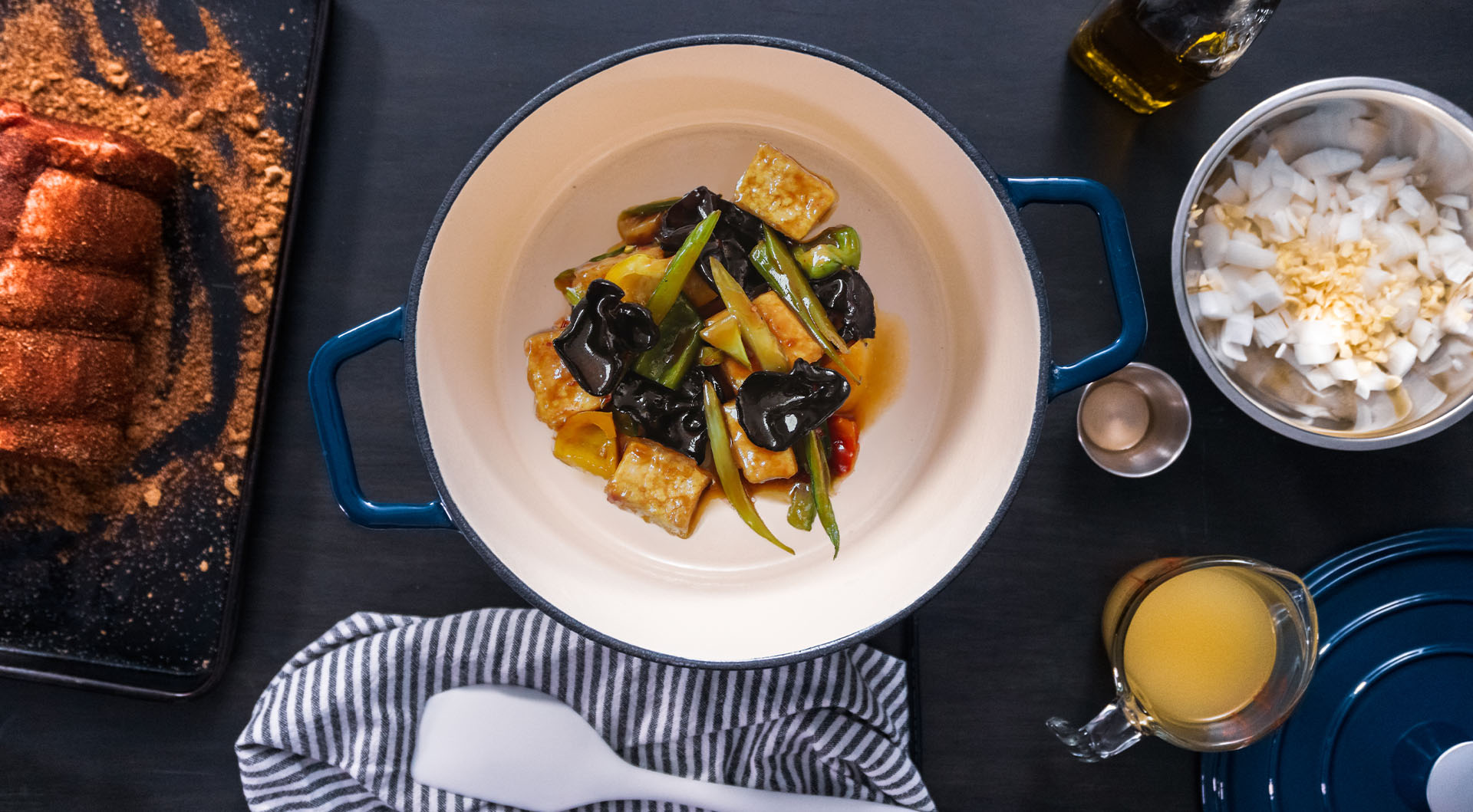
Cooking with Enamelled Cast Iron
How to Clean Enamelled Cast Iron Cookware
What to do if rust forms on the rim of enamelled cast iron cookware
While rust is not generally a great concern with enamelled cast iron, it is possible for rust to form on the exposed raw cast iron rim of pots and pans with lids. This can happen if the cookware is exposed to moisture for too long. To avoid rust deposits forming, avoid washing your cookware in the dishwasher, and do not leave it to drip dry, but ensure it’s been dried thoroughly after washing.
If you notice rust developing on the rim, wipe it clean with a sponge and some mild detergent, and dry it off. Then rub a little cooking oil into the rim. This will provide a protective seal and prevent rust from forming again. You may want to re-season the rim periodically or even after every use to ensure there’s no chance of rust occurring again.
How to Store Enamelled Cast Iron
Enamelled cast iron cookware should be dried thoroughly after cleaning, and stored in a clean, dry area, away from damp, humidity or steam.
To avoid chipping or cracking the enamel (which can happen if it’s bumped hard enough), avoid stacking it with other cookware, or use dish towels or pot protectors as buffers if you need to pack items on top of one another.
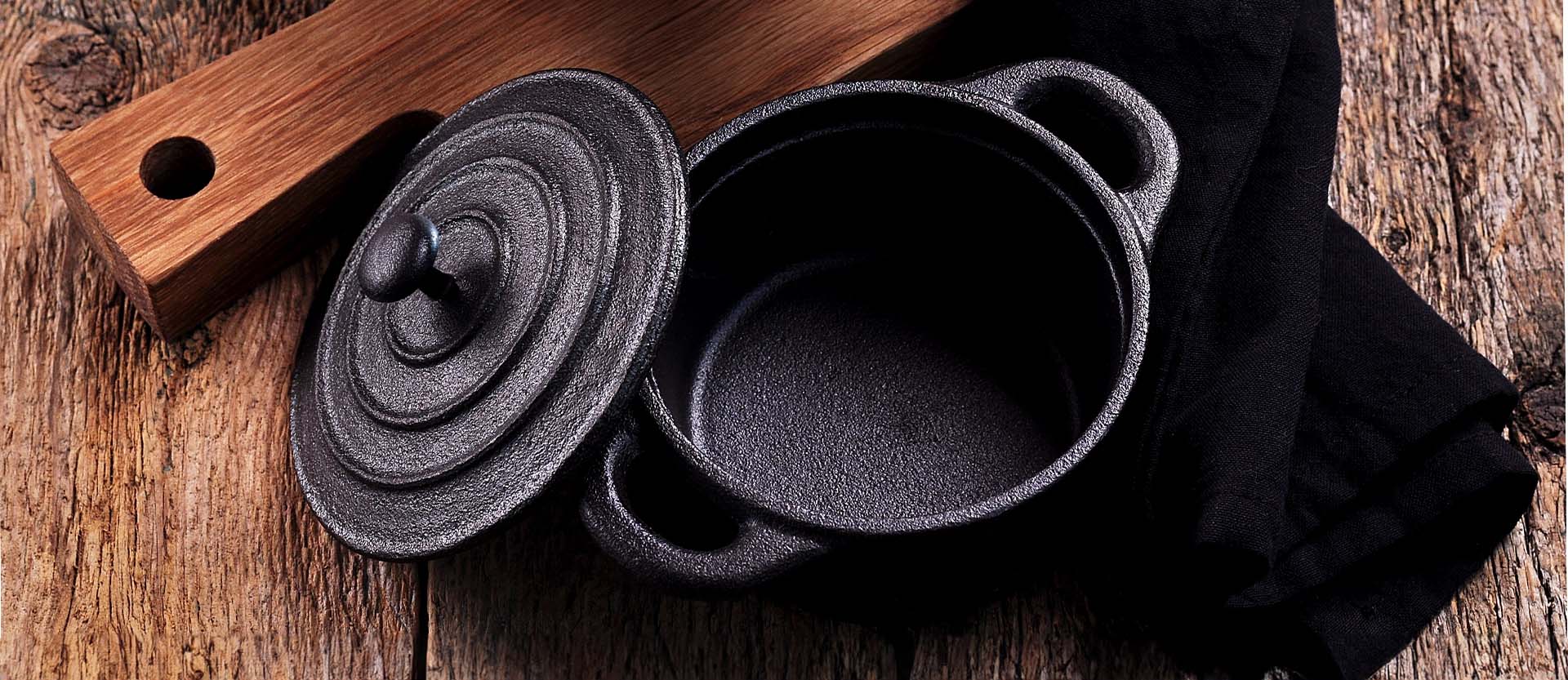
With traditional cast iron, we’re talking about bare, uncoated cast iron cookware. The entire item will be the same dark colour, ranging from lighter grey to dark charcoal, including the handle, although some products may include a handle cover made from wood.
Since uncoated cast iron has a slightly uneven or pitted surface, it needs to be properly seasoned to avoid food and liquids seeping in and sticking to the surface during cooking. Seasoning is a chemical process where multiple layers of oil are ‘baked’ into the surface to create a smooth, non-stick cooking surface.
Read on for guidelines on how to season, safely cook with, clean and store traditional cast iron cookware.
Seasoning your cast iron cookware should be done in two ways:
1. Oven Seasoning
Oven seasoning is done by literally baking multiple layers of oil onto your cookware. Whether you got your cast iron skillet or pot from a yard sale, your parents’ latest decluttering session, or fresh from the factory, it’s always a good idea to do a session of oven seasoning initially to make sure you’ve got a fresh, hardy non-stick cooking surface to cook with. After that, you should only need to re-season it in the oven 2 or 3 times a year, depending on how often you use it.
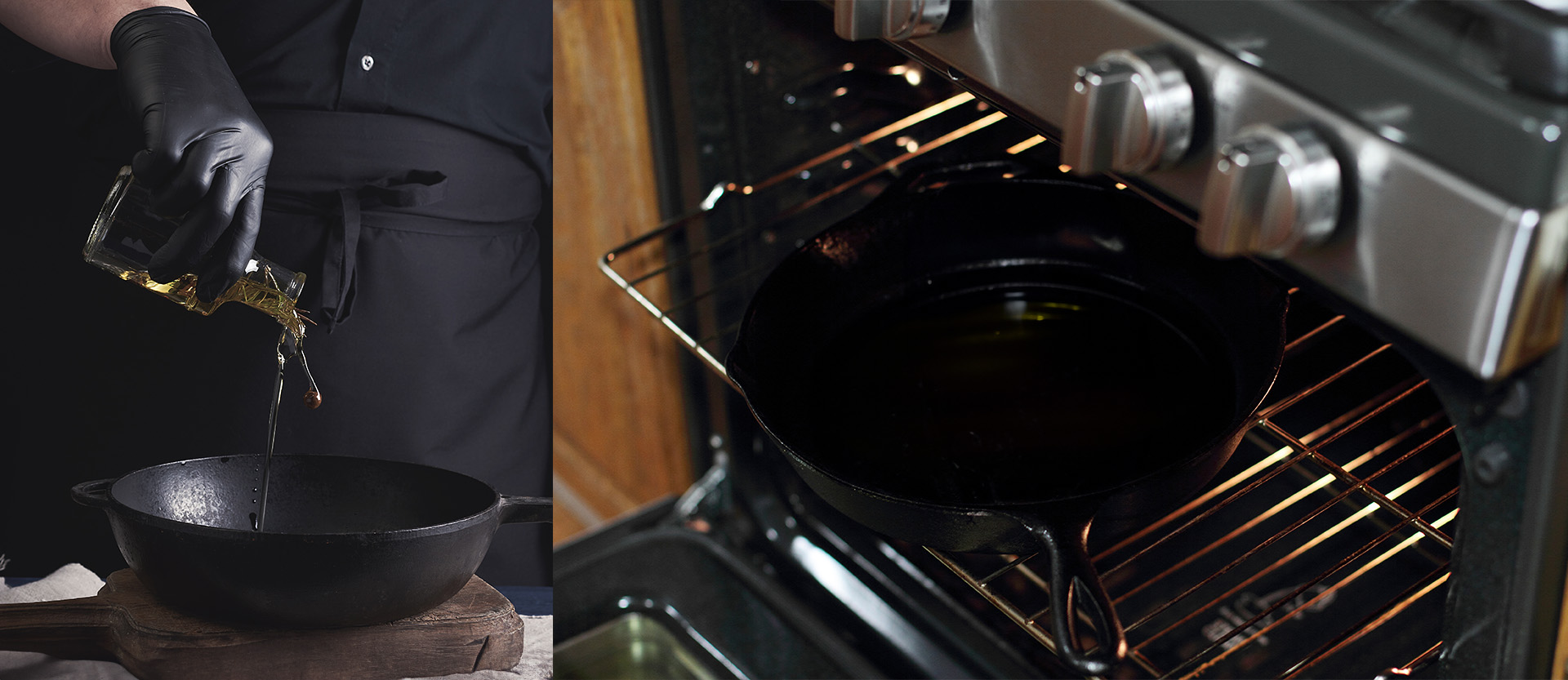
While oven seasoning takes a few hours to achieve the best results, it’s a simple process that only requires a few basic household products. Here are the steps to follow:
When you’re done seasoning, your cookware will be noticeably darker with a semi-gloss finish, all ready to go!
2. Ongoing Seasoning
The great thing about cast iron is that the more you cook with it, the better its non-stick seasoning becomes—provided you follow a few basic guidelines for cooking and cleaning it:
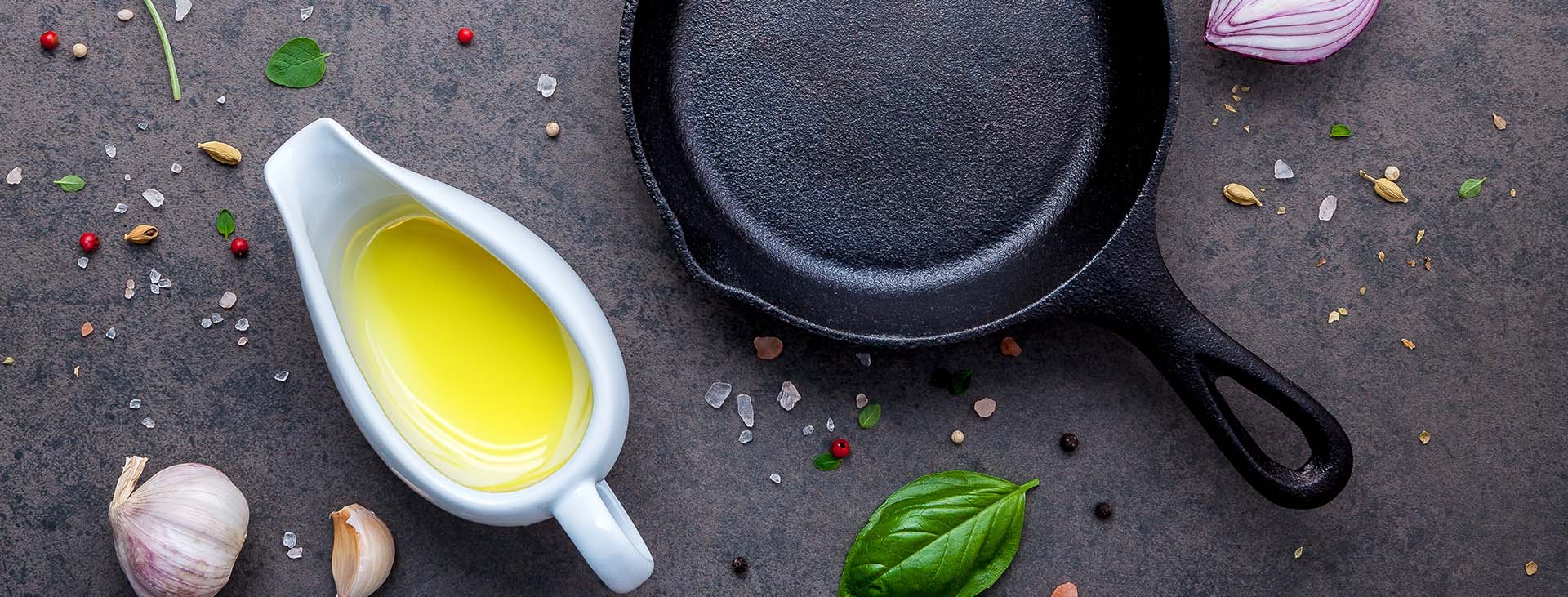
What’s the best oil to season cast iron?
While there is still some debate over the best oil to use for seasoning, you can safely use any oil that is high in unsaturated fats, and which has a high smoke point. It’s also best to use neutral-flavoured oil, since the taste will naturally seep into whatever you’re cooking.
Canola oil, grapeseed oil, flaxseed oil, avocado oil, sunflower oil and vegetable oil blends are all good options. Stay away from olive oil, since it has a very low smoke point and should not be heated to high temperatures.
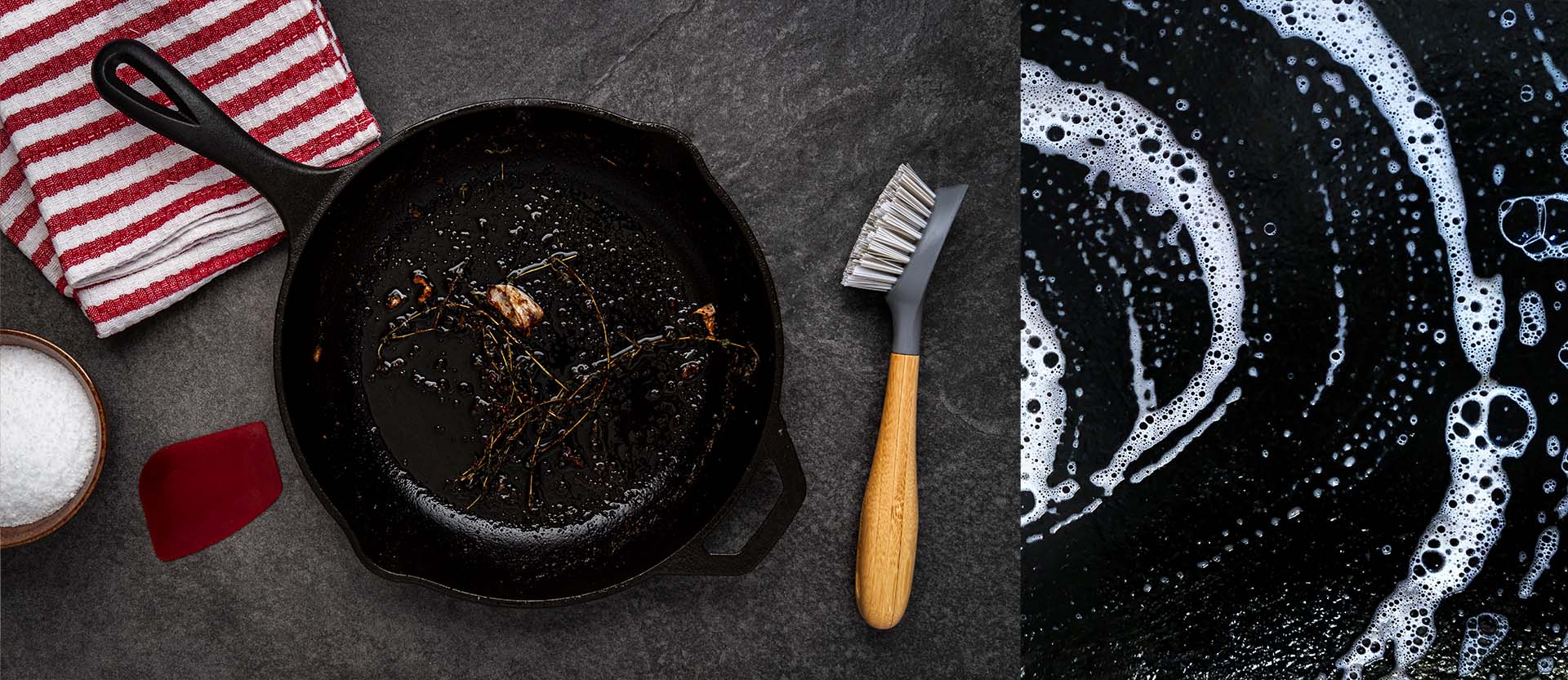
First-time cleaning
When you’re cleaning your new or second-hand cast iron cookware for the first time, wash it by hand in some warm soapy water to remove factory residue, dust or any bits of rust. Rinse thoroughly and immediately dry it well with a dish towel. After this first wash, and once you’ve properly seasoned your cookware, you shouldn’t need to wash it with soap more than once or twice a year.
Regular cleaning
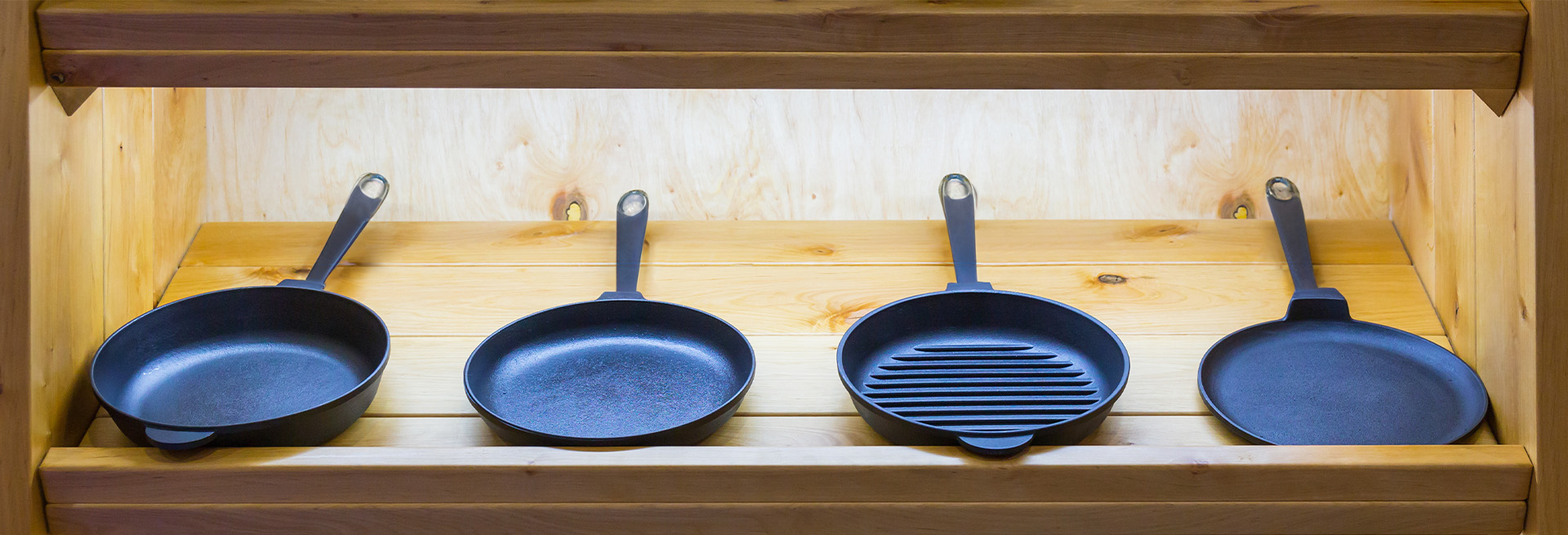
Storing Cast Iron Cookware
Since the biggest enemy of cast iron is rust, always make sure your cookware is bone dry before storing. Slipping a piece of paper towel in before stacking or packing away your pots and pans is a simple and effective way to protect the cooking surface, keep any moisture wicked away, and absorb any excess oil after seasoning.
With these simple guidelines in mind, caring for your cookware will become second nature after a few months as you quickly slip into the cast iron groove!
Whether you’re a ‘seasoned’ fan, or a recent cast iron convert, why not add some fresh inspiration to your cooking with the Nouvelle enamelled cast iron cookware range—designed to inspire your love of cooking! Available in a stunning range of contemporary colours, these hand-finished beauties make the perfect serving dishes after you’ve whipped up the perfect storm in the kitchen.
With Nouvelle, you can enjoy all the benefits of healthier, more versatile, more efficient non-stick cooking, wrapped into a tough, low-maintenance product at amazing value for money.
Check out the complete Nouvelle cookware range available from our online store, or find out more at www.nouvelle.co.za.